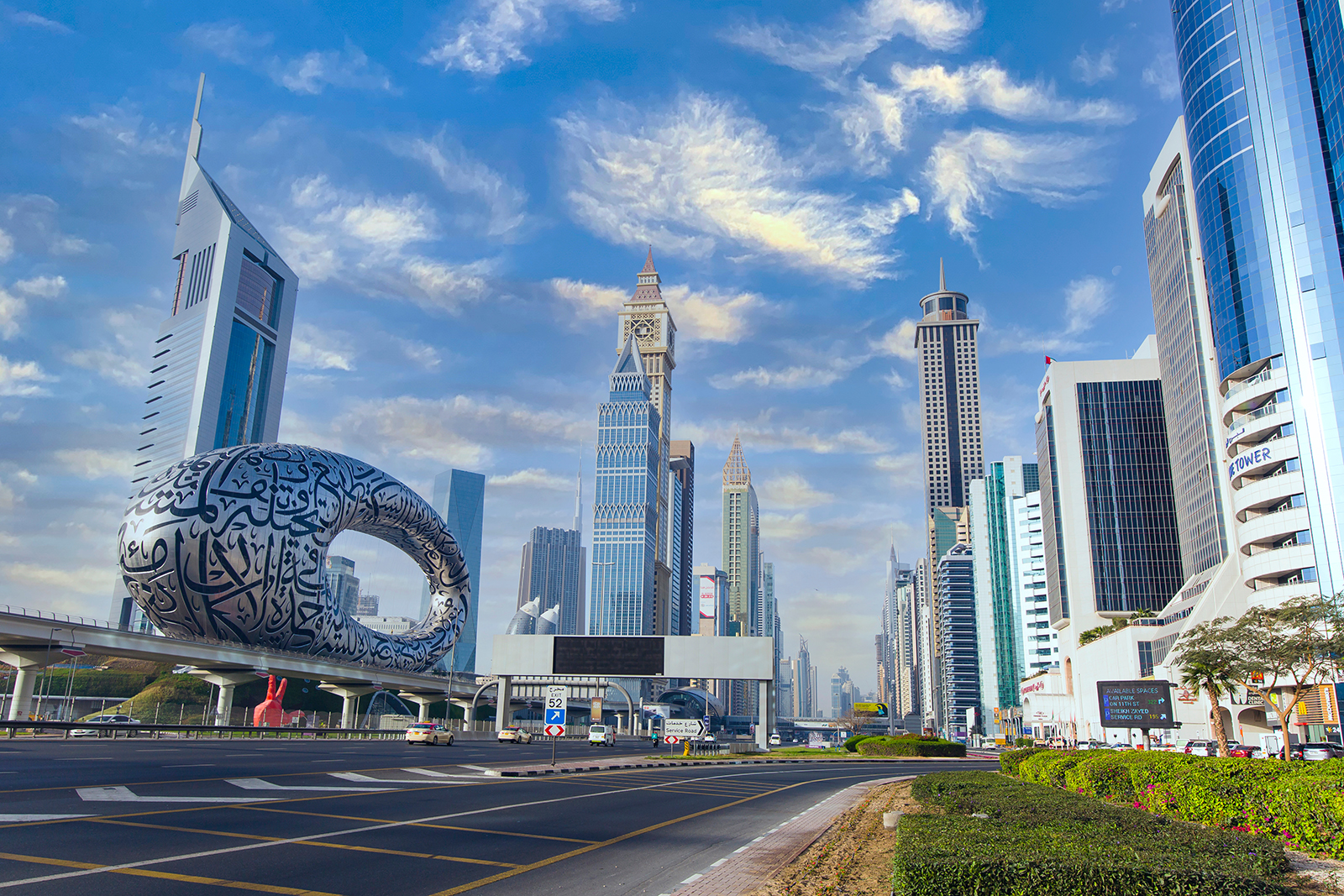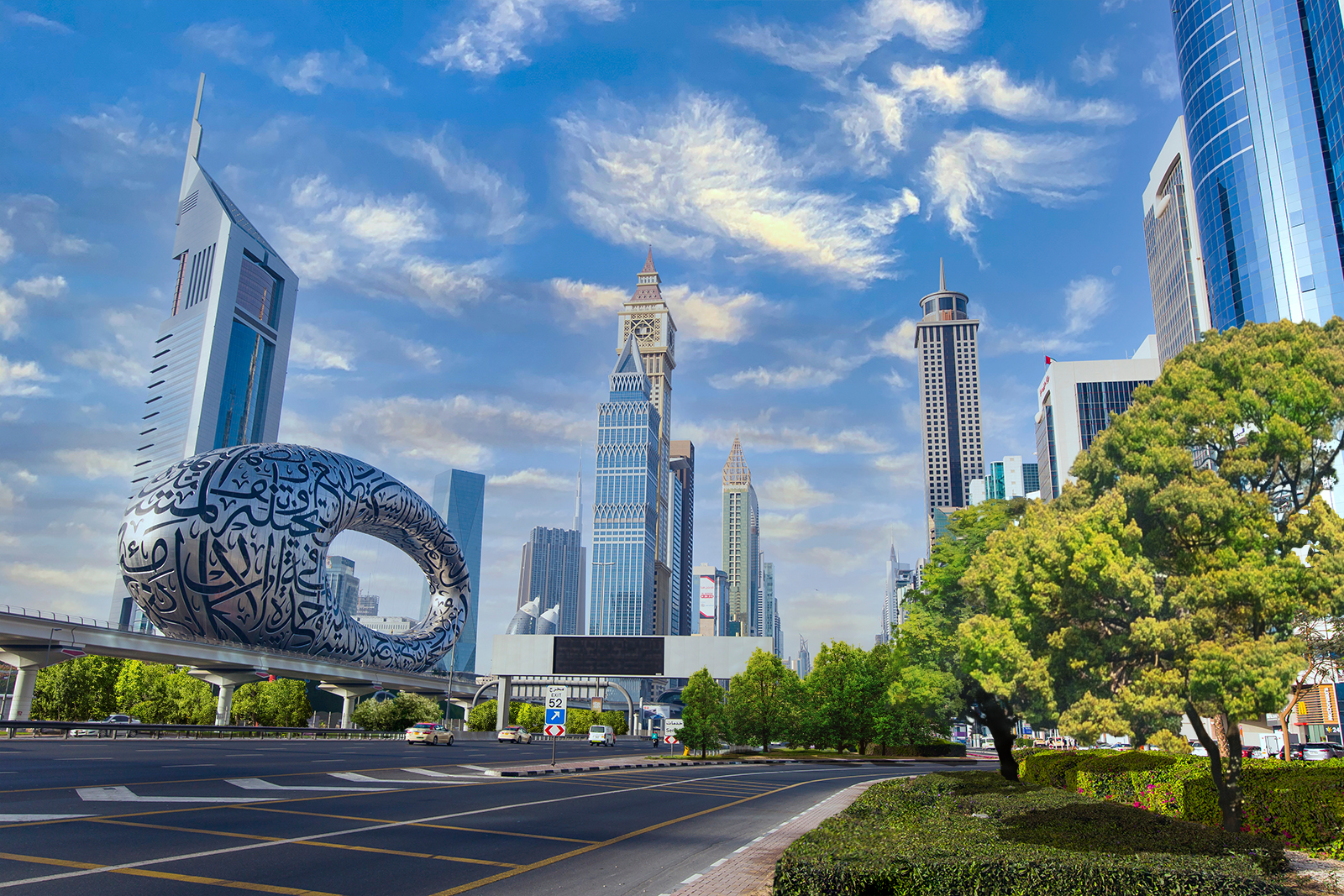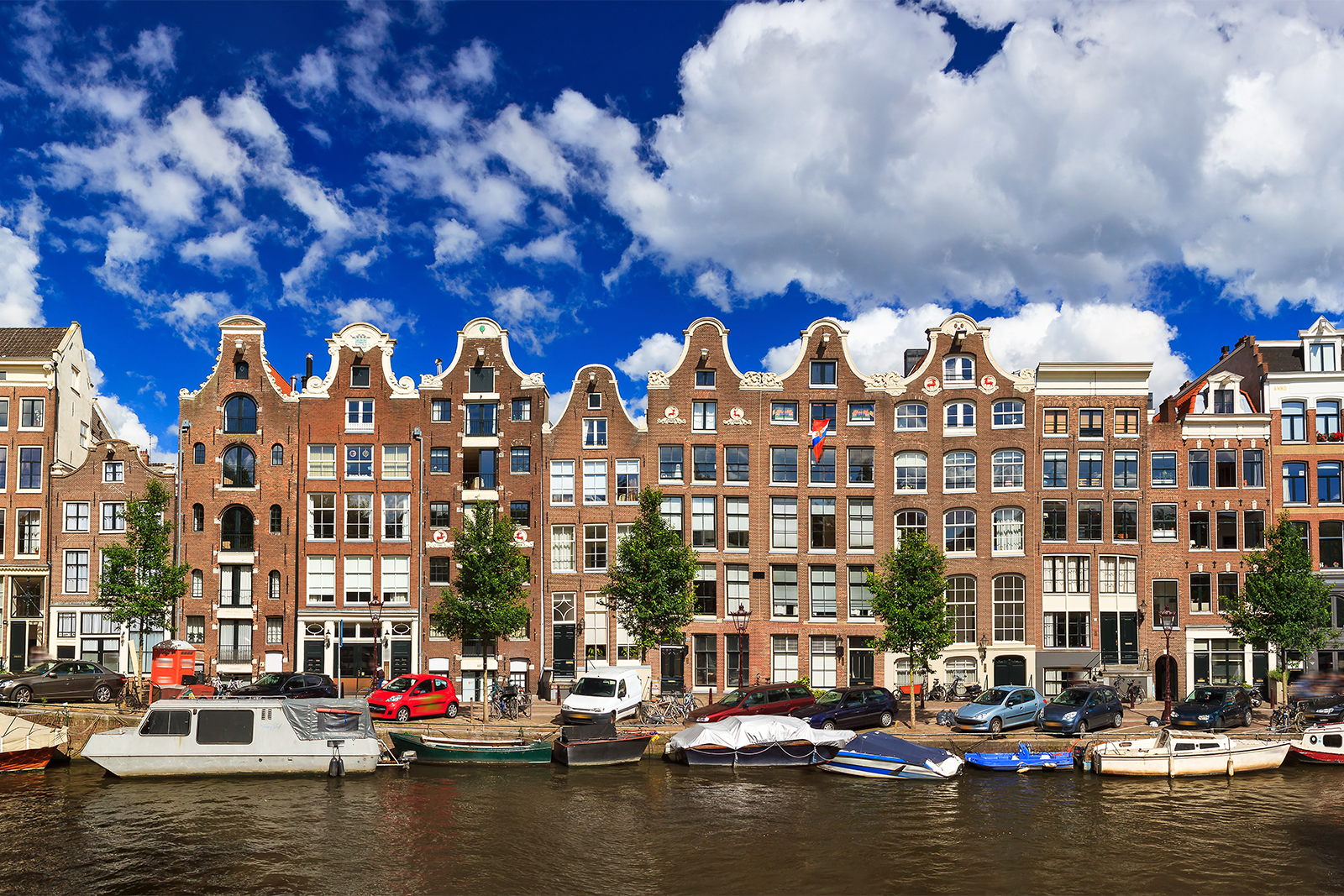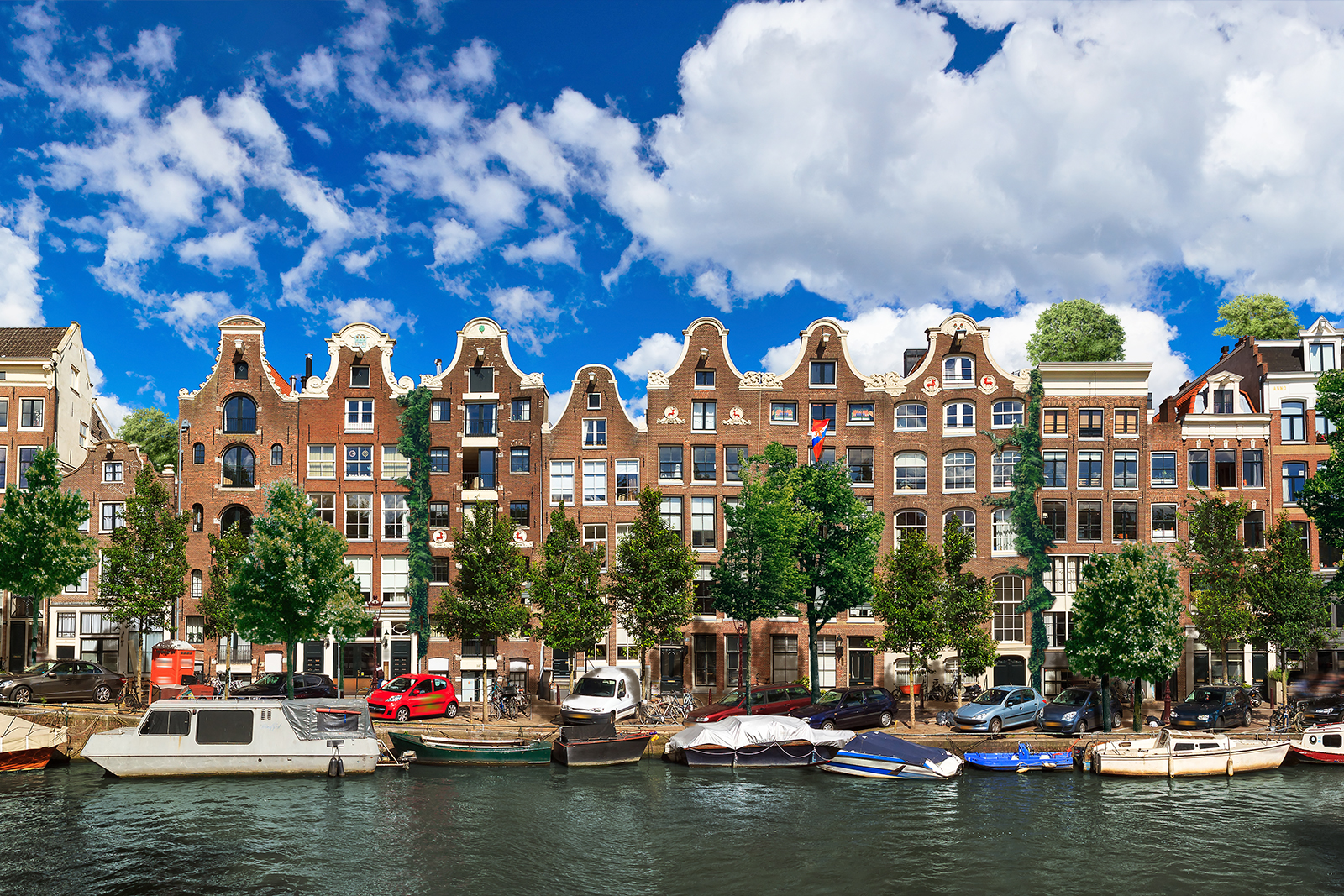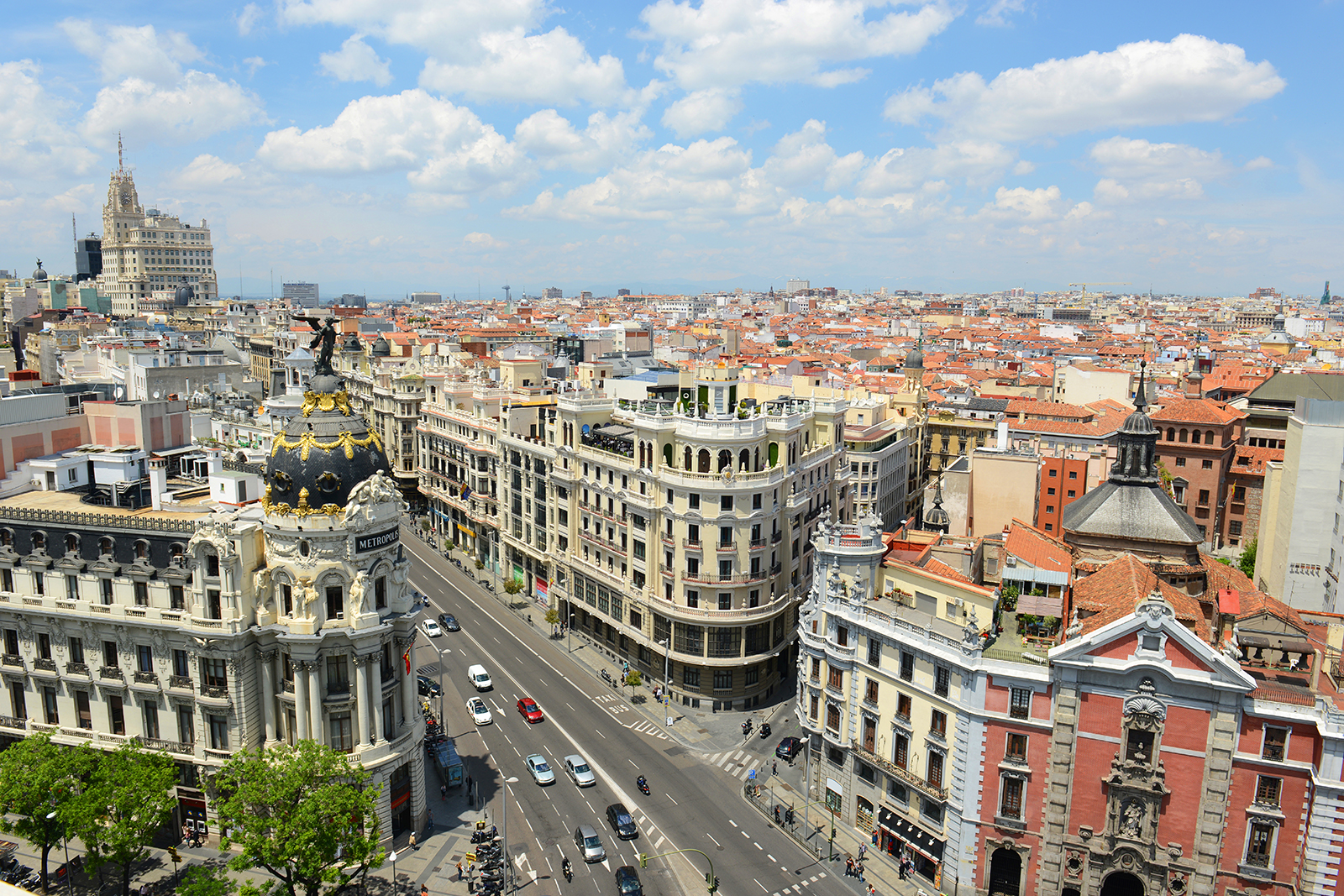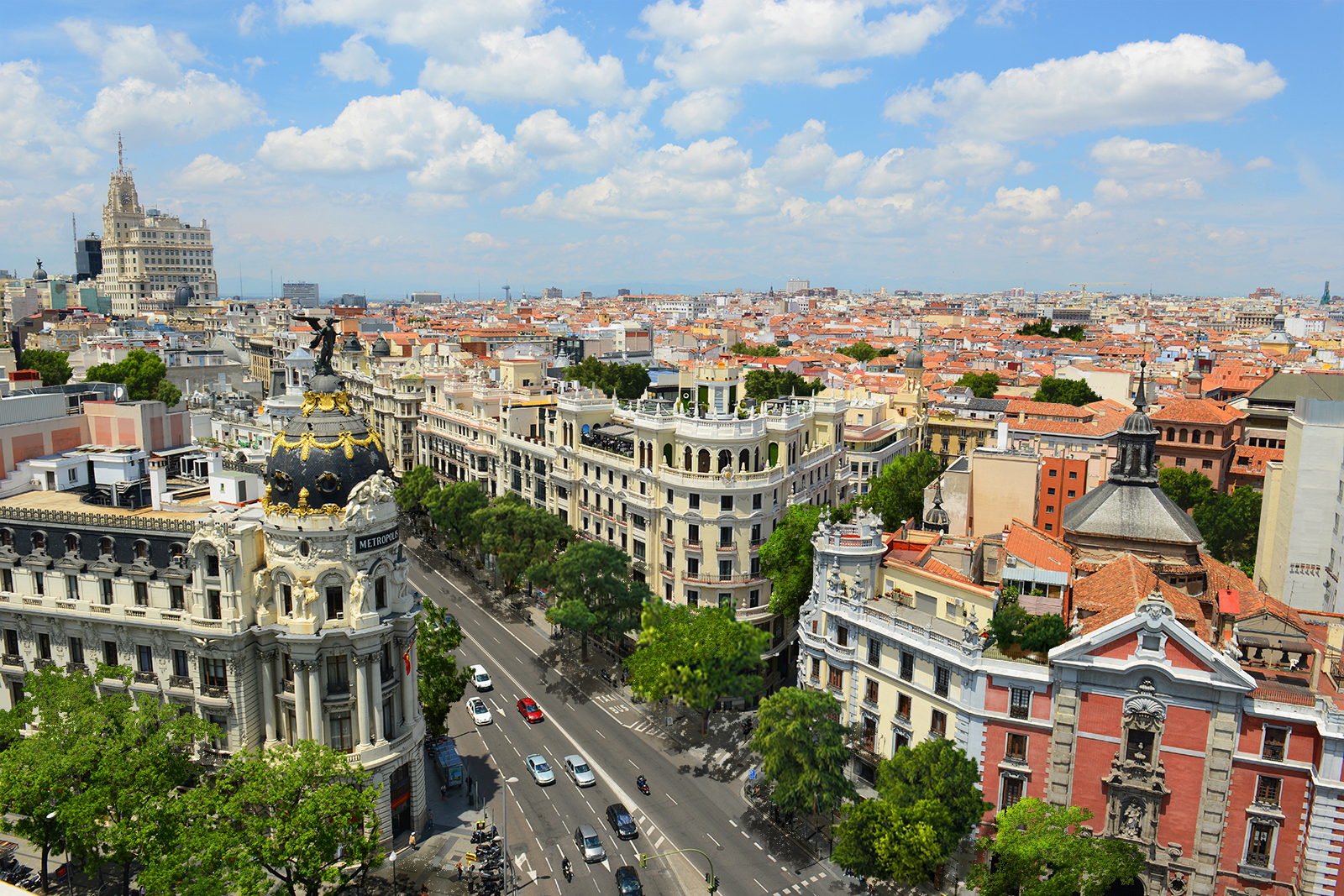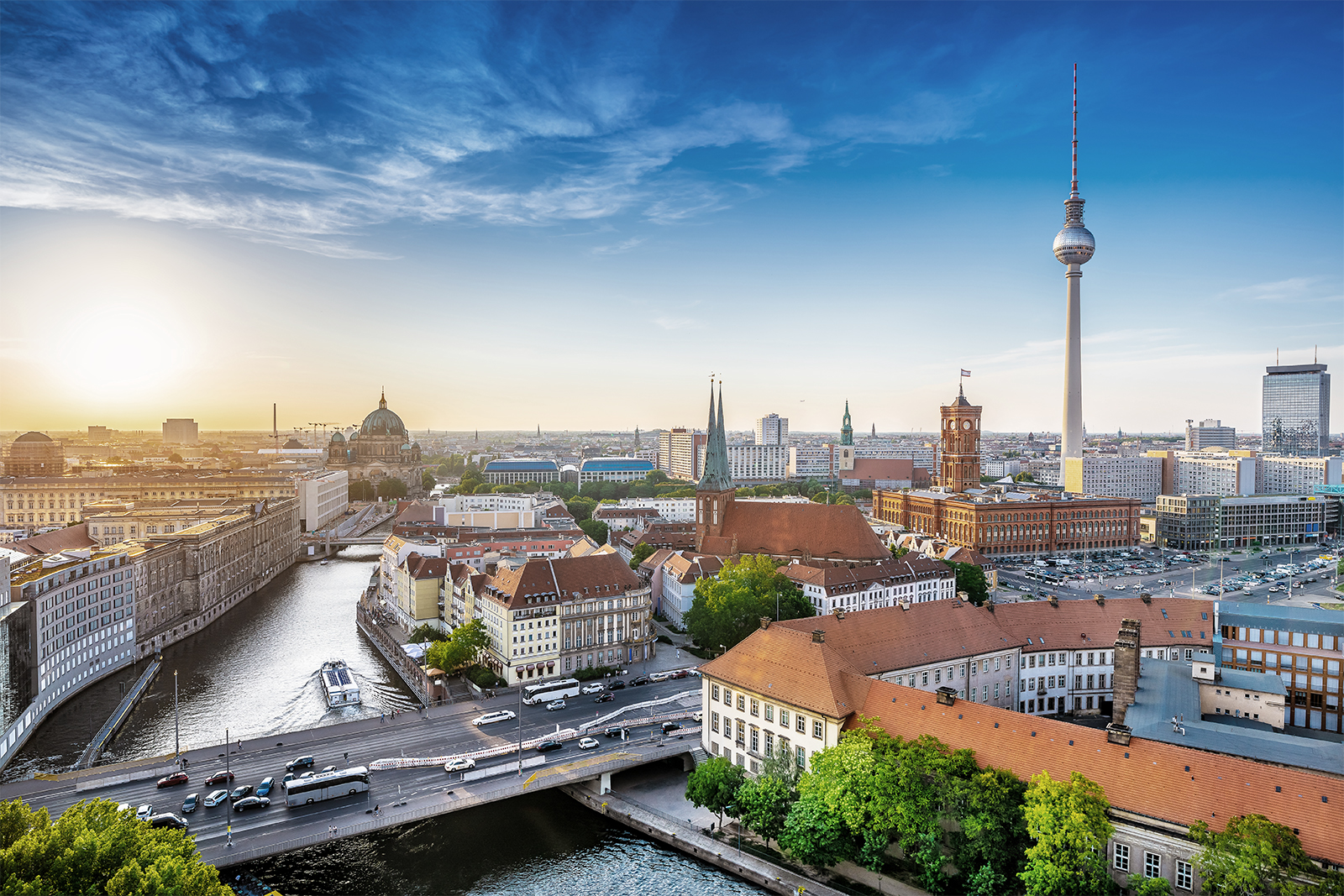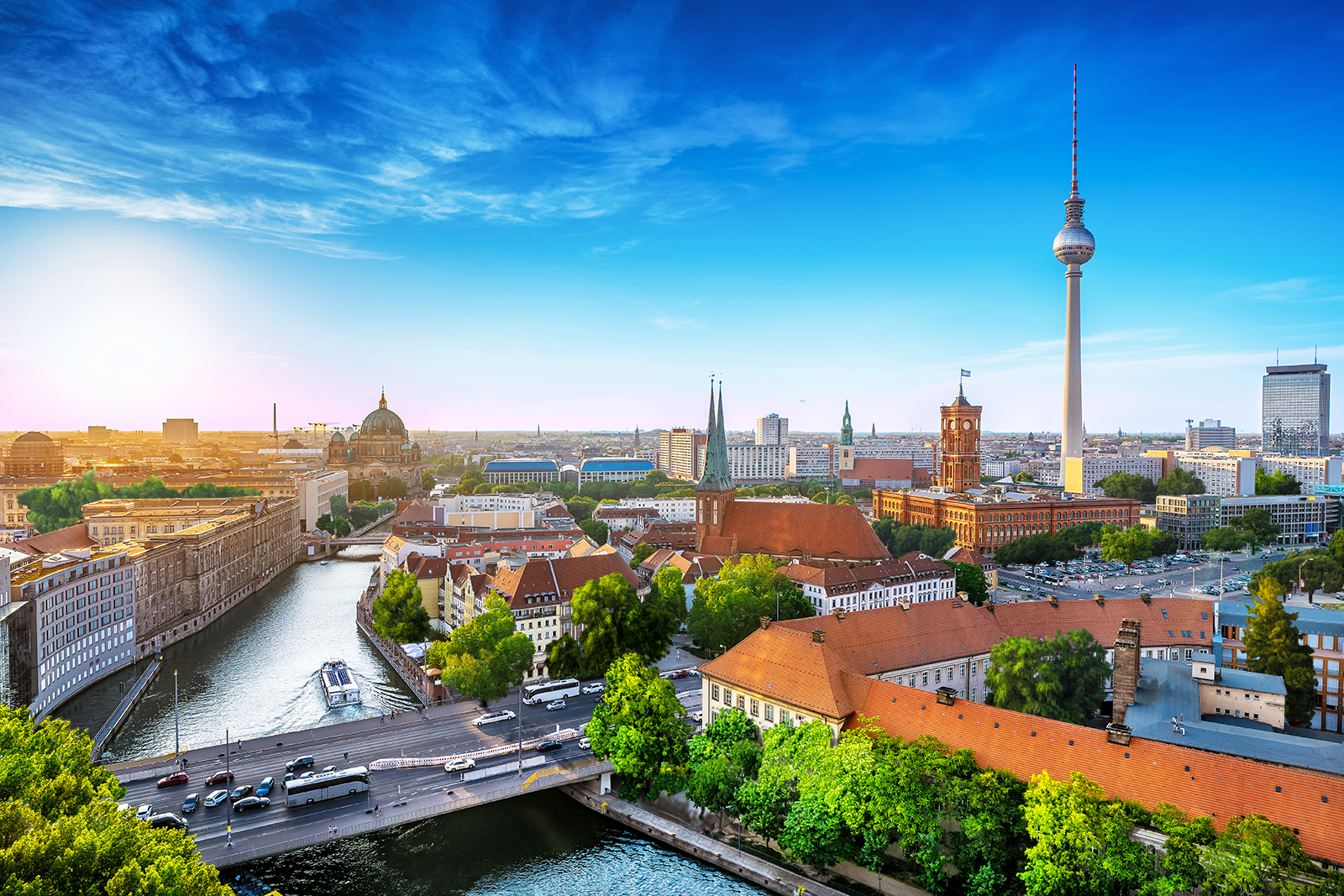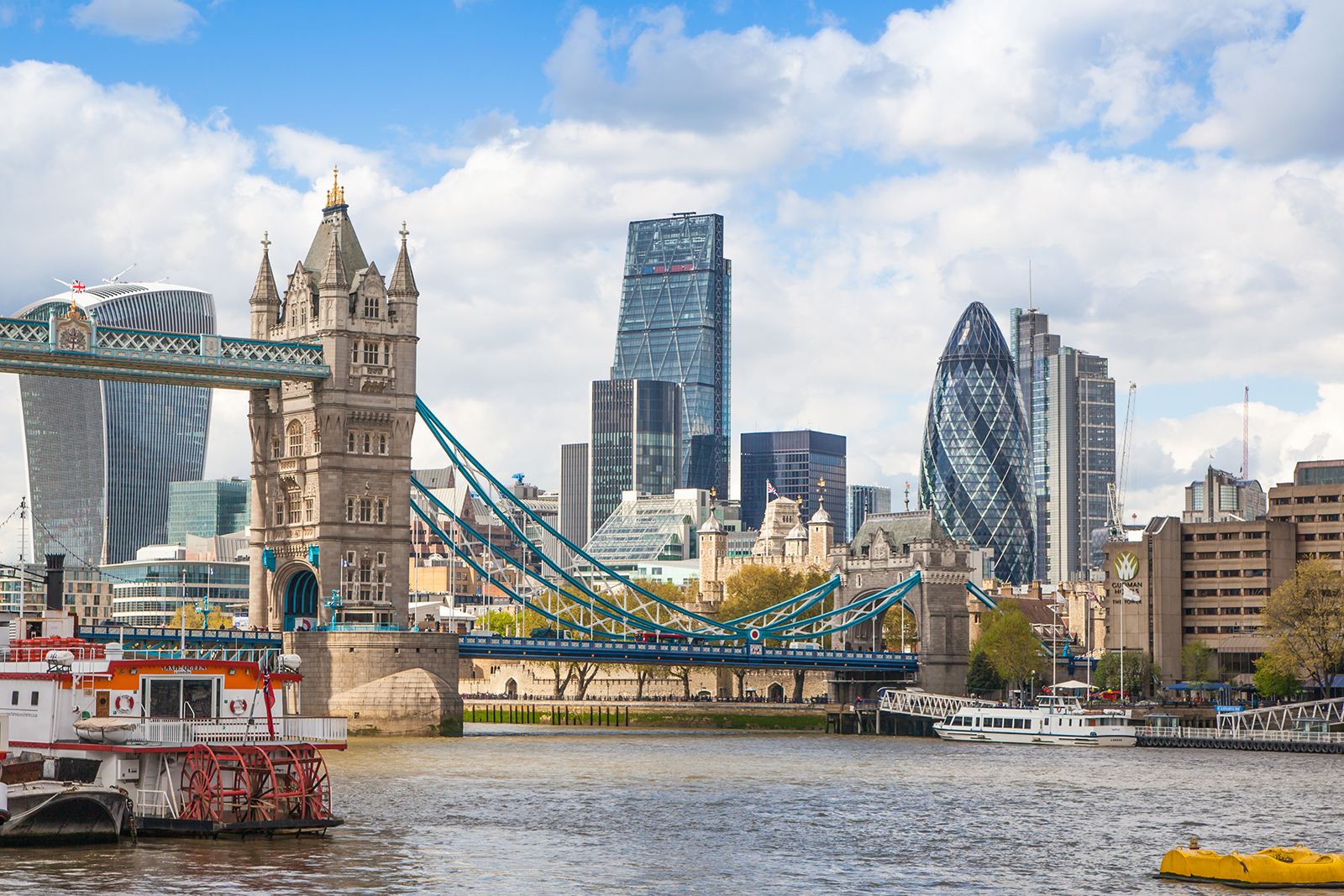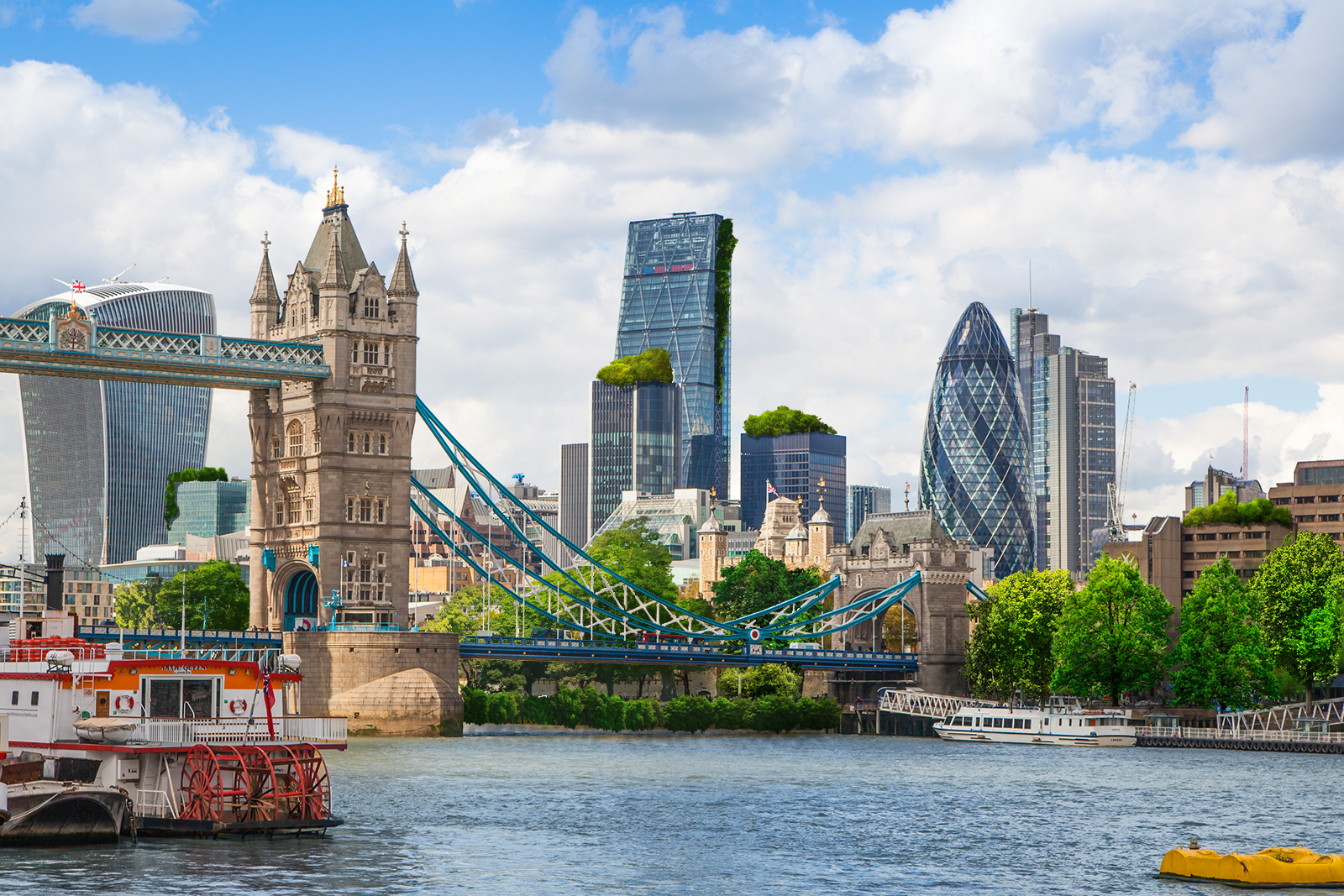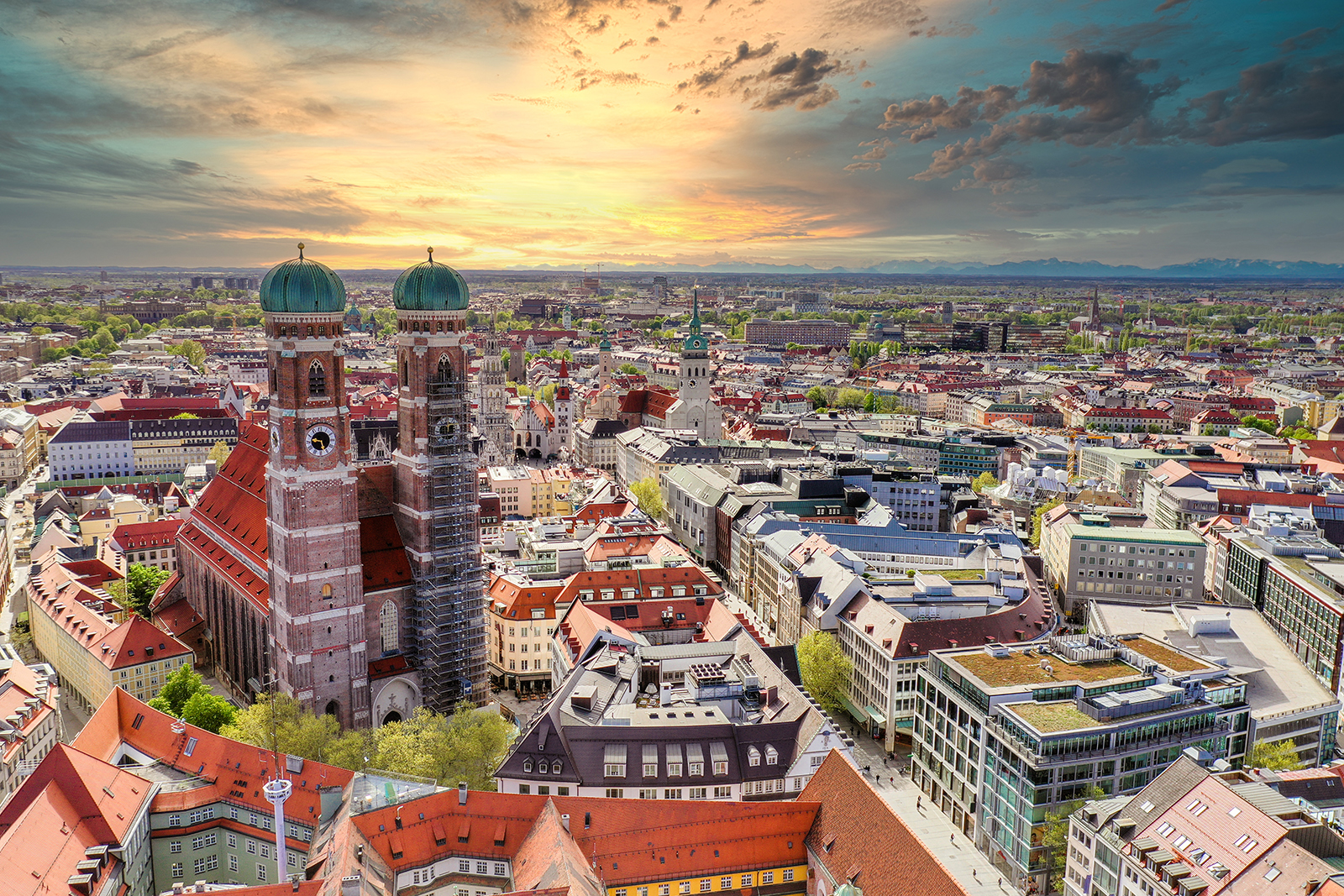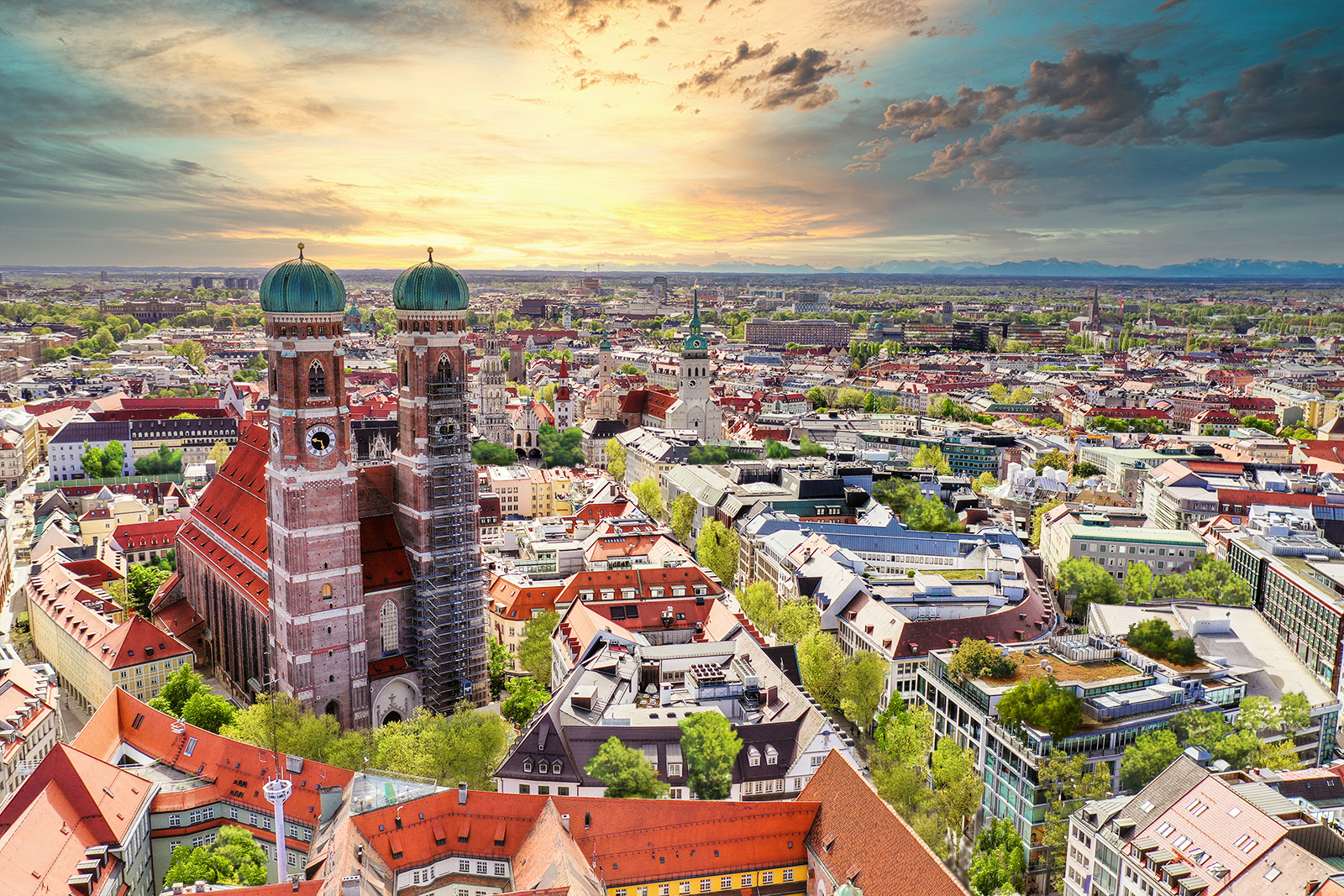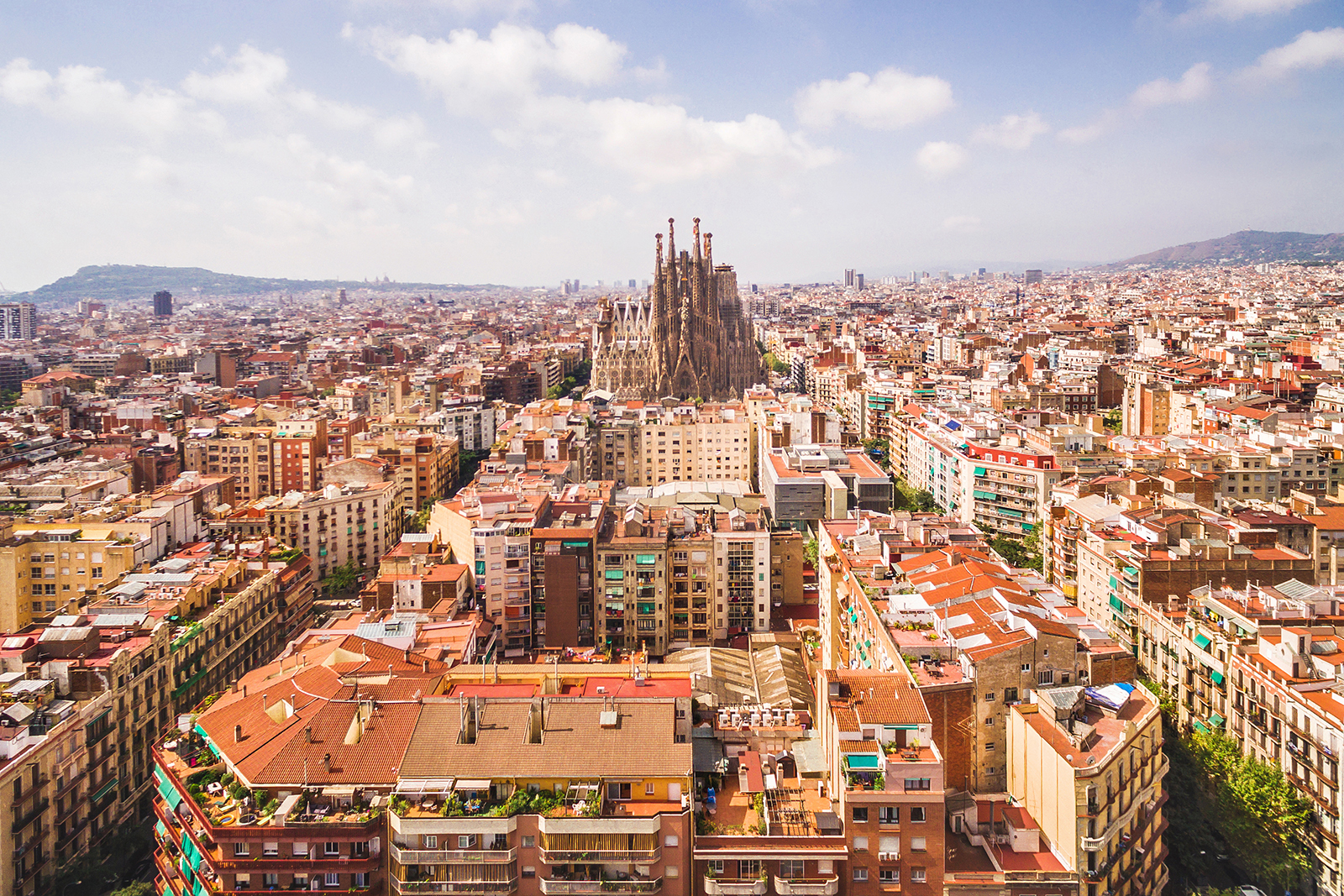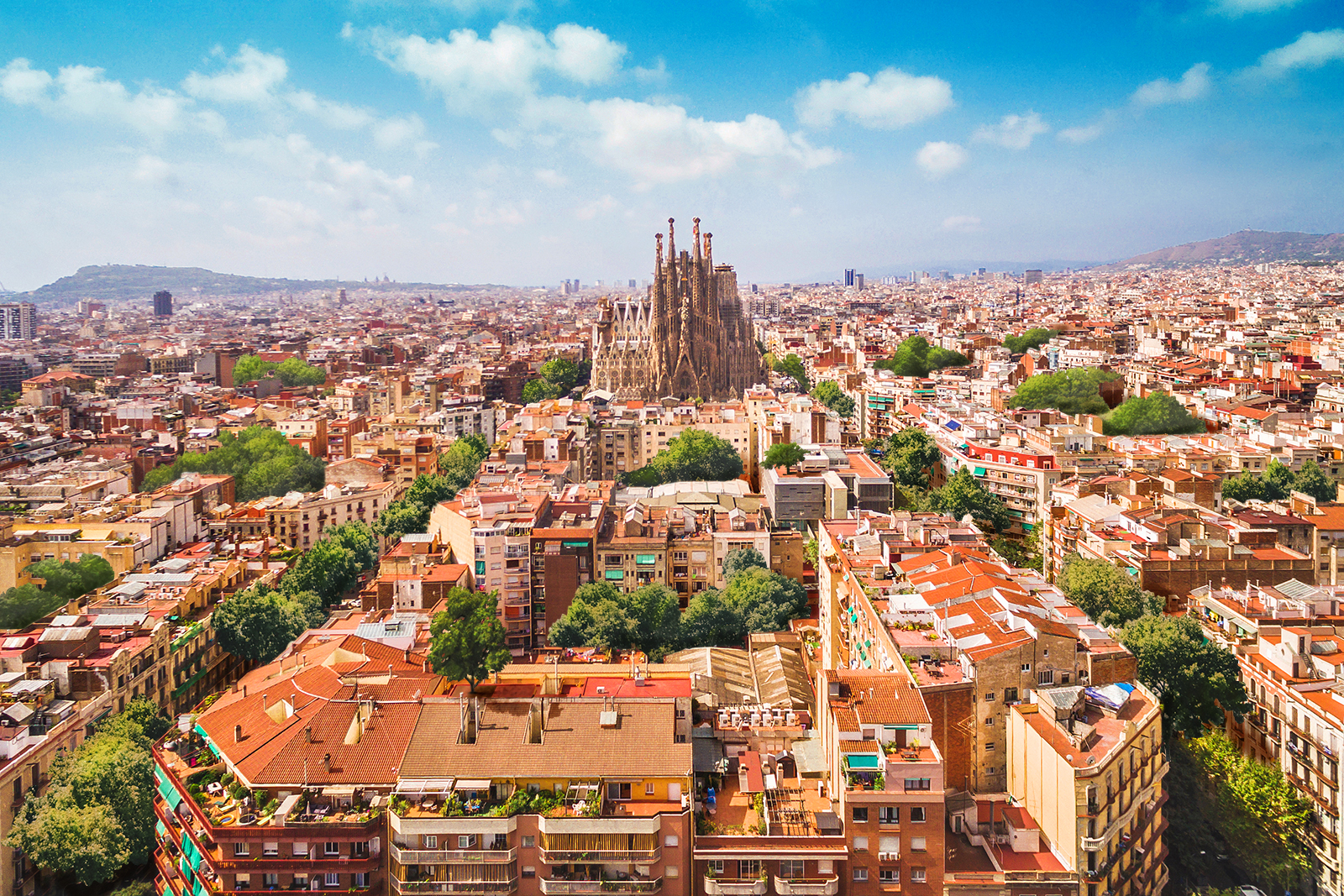As travel enthusiasts we are always keen to encourage people to explore the world and the wonders it has to offer. With more travelers focussing on their carbon footprint than ever before we wanted to know which of the world’s most popular 10 cities are committing to combatting their carbon levels by planting more trees and visually, how their tree pledges would transform them in the coming years.
Using the world’s top 10 cities from EuroMonitor International’s Top 100 City Destinations Index we analyzed annual CO2 data from City Carbon Footprints to find out which cities have the biggest carbon footprint.
Next we researched which cities are leading the way when it comes to combating carbon emissions by pledging to introduce more trees into their ecosystem. This identified estimated future tree populations in each city.
The imagery below visualizes the cities with their current carbon emissions and then how they would look if the proposed pledged trees are planted and the positive impact this would have on the cities’ ecosystems.
Key findings
- Munich has made the biggest commitment to plant more trees out of the 10 cities we analyzed. The city is estimated to be planting over 10 million trees as part of the international 3 Billion Trees Pledge
- 9 of the top 10 cities have pledged to plant 3 million trees to combat their carbon emissions
- Munich, Barcelona and Paris will have the most trees per km2 in the future making them the leafiest locations of the 10 cities analyzed
- Amsterdam has the lowest carbon footprint out of the 10 cities analyzed at 11 Mt CO2
- New York has the highest carbon footprint of the 10 cities we analyzed at 233.5 Mt CO2
- It takes 6 trees on average to offset 1 tonne of C02
- 1 tonne of CO2 is equivalent to the average emissions of one passenger on a return flight from Paris to New York, driving 6000 km in a diesel car or 121,643 smartphones charged
Popular tourist cities combating carbon emissions
To work out how the popular city locations are reducing their carbon footprint, we investigated the current carbon levels in the world’s top 10 cities in EuroMonitor International’s Top 100 City Destinations Index above 10 cities using data from City Carbon Footprints, developed by the Norwegian University of Science and Technology. Then we looked at what pledges each city had made to reduce their C02 levels through planting trees.
To calculate the estimated trees by km2 we took the current number of trees and divided this by the size of the city in km2. We repeated the same method with the future tree pledge figures to identify the future trees per km2.
The table below shows the estimated current carbon footprint and tree numbers in each city, the number of trees pledged to be planted to combat their current levels of carbon and how many trees per km2 we could expect to see in these must-visit destinations in the future.
So which cities have made the biggest climate commitment and which need to boost their efforts? Let’s find out.
The Cities Combating Carbon Emissions
From an analysis of the EuroMonitor International’s Top 100 City Destinations Index, data from the City Carbon Footprint site and other source.
| City | Country | Carbon Footprint (Mt C02) | Est Number of Trees in City | Est Trees per km2 | Future Trees Pledged | Future Trees per km2 |
| Paris | France | 78 | 484,000 | 4,592.03 | 3,000,000 | 33,055.03 |
| Dubai | UAE | 110.8 | 4,500,000 | 1,093.83 | 3,000,000 | 1,823.04 |
| Amsterdam | Netherlands | 11 | 400,000 | 1,823.99 | 3,000,000 | 15,503.88 |
| Madrid | Spain | 43.4 | 248,000 | 410.39 | 3,000,000 | 5,374.81 |
| Rome | Italy | 16.1 | 82,000 | 63.81 | 3,000,000 | 2,398.44 |
| Berlin | Germany | 33.5 | 431,000 | 483.29 | 3,000,000 | 3,847.28 |
| New York | USA | 233.5 | 5,200,000 | 6,634.35 | 3,000,000 | 10,461.85 |
| London | UK | 99 | 8,421,000 | 5,356.87 | 3,000,000 | 7,265.27 |
| Munich | Germany | 11.8 | 3,606,407 | 11,607.36 | 10,494,492 | 45,384.29 |
| Barcelona | Spain | 26.1 | 1,400,000 | 13,738.96 | 3,000,0000 | 43,179.59 |
Cities now and in the future
Paris is breaking up with carbon emissions
Taking the top spot in EuroMonitor International’s Top 100 City Destinations Index, Paris, France is renowned for being one of the most romantic cities in the world. So how does it fare when it comes to the carbon emissions caused by the hustle and bustle of the city?
The current carbon footprint of France’s capital city is 78 Mt C02, with an estimated 484,000. trees.
The city has pledged to plant 3 million trees to help combat their carbon emissions. Our research revealed that if the city honors its pledge that there will be over 33 thousand (33,055.03) trees per km2 in Paris in the future. This would be a 14% increase from their current 4,592.03 trees per km2.
While this will help to some degree, our study found that Paris needs to plant over 467 million (467,516,000) trees in order to absorb their current carbon levels. This would bring the trees per km2 to 4,435,635.67.
Dubai needs to commit to plant more trees to combat carbon emissions
With a current carbon footprint of 110.8 Mt C02 Dubai, UAE has far to go in order to combat its emissions.
Estimates put the number of trees in Dubai at 4,500,000 with the city having pledged to plant 3 million trees to cut down their emissions.
This would help curb carbon levels with our research indicating that this would mean that if proposed trees are planted there will be nearly 2 thousand (1,823.04) trees per sq km in the future in Dubai. This would be a 60% increase on their city’s current tree numbers of 1,093.83 per km2.
However, our study shows that Dubai needs to plant over 660 million (660,300,000) trees in order to reduce their current carbon footprint. If this many trees were planted the number per km2 in Dubai would be 160,500.73.
Amsterdam has the lowest carbon footprint of cities analyzed
Our research found that Amsterdam, Netherlands has the lowest carbon footprint out of the 10 cities we analyzed. The current C02 levels in the city are 11 Mt C02.
With an estimated 400,000 trees in the city currently and 3 million trees pledged to be planted, we would put the estimated future tree numbers at over 15 and a half thousand (15,503.8) trees per km2. If planted, the pledged trees would increase the city’s current trees per km2 of 1,823.99 by 11.76%, from the Station to Dam Square until the Museum District.
Our study found that the city would need to plant over 65 million (65,600,000) trees to absorb their current carbon levels. That figure may seem high, but it’s the smallest out of the top 10 cities which is great news for both locals and people looking to travel to Amsterdam. This would bring the trees per km2 in Amsterdam to 299,133.61.
Madrid remains committed to reducing their carbon footprint
Spain’s capital city, Madrid has a current carbon footprint of 43.4 Mt C02, with estimates placing the number of trees in the city at 248,000.
The city plans to create a “Metropolitan Forest”, intended to transform the biodiversity of the city. This includes the planting of 3 million trees to reduce their carbon levels. This would mean that there would be over 5 thousand (5,374.81) per km2 if the pledged trees are planted and the city’s current tree figure of 410.39 per km2 would increase by 7.64%.
Our research shows that over 260 million (260,152,000) trees would need to be planted in the city to combat its current carbon levels, increasing the number of trees per km2 to 430,501.41.
Rome is dedicated to making carbon emissions ancient history
Italy’s capital city of Rome is adored by history lovers and locals alike. We found that its current carbon footprint is 16.1 Mt CO2.
With an estimated 82,000 trees in the city, the city has pledged to plant 3 million trees to reduce their carbon levels as part of the C40 Cities Pledge. This would bring their future number of trees to over 2 thousand (2,398.44) per km2, that’s an increase of 2.66% from the current 63.81per km2.
Our research shows that Rome would need to plant over 96 million (96,518,000) trees to help reduce their current carbon levels. This would bring the population of trees in Rome to 75,111.28 km2.
Berlin is working hard to combat carbon emissions in the city
The capital and largest city of Germany, Berlin has a current carbon footprint of 33.5 Mt C02.
Estimates put the number of trees in Berlin at 431,000 with a further 3 million trees pledged to be planted in the future. This would mean Berlin would have nearly 4 thousand (3,847.28) trees per km2. The change from the current 483.29 per km2 would be a 12.56% increase.
Our analysis showed that the city needs to plant over 200 million (200,569,000) trees in order to absorb their carbon emissions. The introduction of these trees would boost the number of trees per km2 to 224,903.57.
New York has far to go to reduce their carbon footprint
We found that the city of New York has the highest carbon footprint of the 10 cities we analyzed. This is not hard to believe in a highly industrialized country like the United States, with some areas such as even California, with Los Angeles and San Diego, being very polluted.
With a carbon footprint of 233.5 Mt C02, the city has its work cut out in order to drastically reduce its carbon emissions.
New York has an estimated 5,200,000 trees and has pledged, alongside other countries in our top 10 list, to plant 3 million trees. This would bring the number of future trees in the city to over 10 thousand (10,461.85) per km2, an 63.41% increase from the current 6,634.35 per km2.
However, our study found that while this would be a step in the right direction, more needs to be done to address the carbon levels in the city. In fact, New York needs to plant over a billion trees (1,395,800,000) in order to absorb its current carbon footprint. This would increase the number of trees per km2 in the city to 1,780,811.43.
London is calling time on its carbon footprint
The capital city of England, London is known for being a metropolitan city with a mass of sights for travelers to see. We found that the current carbon footprint of the city is 99 Mt C02 with the estimated number of trees in the city coming in at 8,421,000. That puts their current tree figures at 5,356.87 per km2.
The city is part of the C40 Cities Pledge and has committed to planting 3 million trees to combat their current carbon emissions. This would bring their number of trees to over 7 thousand (7,265.27) per km2, a huge 73.73% increase from current tree numbers in the city.
To avoid unnecessary travel, you can leave your luggage in London and walk around the city burden-free.
However, our study shows that nearly 6 hundred million (584,979,000) trees are needed to absorb the capital’s current carbon emissions. The result would be 372,124.05 trees per km2 in the capital city.
Munich pledges to curb carbon levels
Munich, Germany is committed to making a positive impact on their carbon footprint. With carbon levels currently at 11.8 Mt C02, the estimated number of trees in the capital city of Bavaria is 3,606,407 based on country-wide statistics from Our World In Data and then taking the population and size of the city into account. This brings the number of trees to approximately 11,607.36 per km2.
The city has made the biggest pledge of all the top 10 cities we studied, estimated to be committing to plant over 10 million (10,494,492) trees as part of their international efforts to reduce carbon levels through the 3 Billion Trees Pledge. This would increase the city’s tree numbers by 25.58% to 45,384.29 per km2.
Our analysis showed that the number of trees needed to absorb current carbon levels is over 67 million (67,193,593), which equates to around 216,265.19 trees per km2, so their current pledge is a huge step forward in reducing CO2 in the city.
Barcelona is determined to reduce their carbon footprint
The cosmopolitan capital of Spain’s Catalonia region, Barcelona has a current carbon footprint of 26.1 Mt C02, Barcelona is estimated to have 1,400,000 trees at present. This results in around 13,738.96 trees per km2.
Alongside 9 other cities in the top 10 list Barcelona has committed to plant 3 million trees to combat their carbon emissions. This would increase their number of trees by 31.82% to just over 43 thousand (43,179.59) km2 if all the pledged trees are planted.
However, our study shows that the city needs to plant over one hundred fifty-five thousand (155,200,000) trees to curb their current carbon emissions. This would result in an impressive 1,523,061.83 trees per km2 in the city.
Estimated number of trees needed
To ensure the pledges the cities have made for the introduction of more trees are enough to really take the fight to carbon, we calculated the number of trees each city would need to plant in order to combat their current carbon footprint.
Research from Shipit shows that it takes 6 trees on average to offset 1 tonne of C02, using this data we estimated how many trees are needed to combat the carbon emissions in each city. The CO2 for the cities is measured in million tonnes.
We used the formula of (6 trees x million tonnes of CO2 x 1 million) to calculate the estimated number of trees needed in each city to combat their current C02 levels.
To put this into context, research from Crown Oil shows that 1 tonne of CO2 is equivalent to 500 x CO2 fire extinguishers, 1 x 500m3 hot air balloon, the average emissions of one passenger traveling on a return flight from Paris to New York, driving 6000 km in a diesel car or 121,643 smartphones charged.
This research showed that whilst cities are working hard to curb their carbon footprint, more trees than those pledged need to be planted to gain the upper hand in the fight against carbon emissions alongside other carbon cutting initiatives.
What more can be done to combat carbon footprints?
This study is limited to the impact the introduction of more trees into cities can help reduce current carbon emissions. Experts at City Carbon Footprints state that “Local action at the city and state level can meaningfully affect national and global emissions.”
A city’s direct emissions, aka Scope 1 emissions, occur directly in the city boundaries, e.g from factories, cars, and heaters/boilers.
We focussed on a city’s total carbon footprint, aka Scope 3 emissions, as reported in City Carbon Footprints dataset – this includes embodied CO2 associated with everything consumed in the city even if the emissions used to produce it occur elsewhere.
Our research shows that while progress is being made in order to introduce more trees to these key cities, more action is needed to improve their ecology in order to combat the current levels of carbon we are seeing across the board.
Daniel Moran, Environmental Economist at the Norwegian University of Science and Technology, and co-creator of the City Carbon Footprints site, gave this advice on what actions cities and individuals can take to reduce their carbon footprint further.
- Aggressively reduce emissions and energy use from the city government. This means reducing the footprint of city services, contracted construction, and municipal buildings. Request low-carbon building materials and zero-carbon construction sites.
- Reduce beef consumption. For example, serving less, and only grass-fed local beef in any city-run services.
- Reduce flights. Substitute with train travel and regional development within electric car range.
- Make electric vehicle charging points ubiquitous.
- Phase out fossil fuel heating and cooking.
- Require that all electricity be purchased with renewable Guarantee of Origin certificates.
- Add CCS to major emissions sources in the city.
Methodology
We identified the top 10 most popular cities in the world according to EuroMonitor International’s Top 100 City Destinations Index, and then used annual CO2 data from Carbon Footprints to establish their current levels of carbon emissions. Then we investigated the current pledges in each city for planting trees in a bid to offset CO2.
This helped us to identify the cities whose effort would make the biggest impact to the current levels of carbon in the city.
Next we divided the existing number of trees in each city by its size in km2 to establish the expected trees per km2. We then added the current number of trees to those proposed and divided this figure by each city’s current size in km2 to give us the estimated trees per km2 if the pledged trees are planted.
With research from Shipit showing that it takes 6 trees on average to offset 1 tonne of C02, we estimated how many trees are needed to combat the carbon emissions in each of the ten cities. The CO2 for the cities is measured in million tonnes. Therefore we used the formula of (6 trees x million tonnes of CO2 x 1 million) to calculate the estimated number of trees needed in each city to combat their current C02 levels.
The before imagery was created to depict the current tree numbers taking into account carbon levels. The after imagery is intended to illustrate the ecological impact if the pledged trees were planted. This includes potential improved air and water quality in addition to reduced carbon emissions. The increase in trees is based on the percentage difference between current tree numbers and current tree numbers plus those pledged to be planted.
Other factors can also lead to the reduction of carbon, for example changes to transportation and manufacturing.
Sources
- Top 100 City Destinations Index – https://go.euromonitor.com/rs/805-KOK-719/images/wpTop100CitiesIndex2021-v0.4.pdf
- City Carbon Footprints – https://www.citycarbonfootprints.info/
- City Carbon Footprints – https://www.citycarbonfootprints.info/
- Fusac – https://fusac.fr/trees-in-paris/
- C40 Cities – https://www.c40.org/cities
- City Carbon Footprints – https://www.citycarbonfootprints.info/
- Statista – https://www.statista.com/statistics/640599/dubai-numbers-of-trees-and-shrubs-in-green-areas/
- C40 Cities – https://www.c40.org/cities
- City Carbon Footprints – https://www.citycarbonfootprints.info/
- Dutch Amsterdam – https://www.dutchamsterdam.nl/127-amsterdam-trees
- C40 Cities – https://www.c40.org/cities
- City Carbon Footprints – https://www.citycarbonfootprints.info/
- Liabeny – https://www.liabeny.es/en/blog/espanol-madrid-2a-ciudad-del-mundo-en-espacios-verdes/
- C40 Cities – https://www.c40.org/cities
- City Carbon Footprints – https://www.citycarbonfootprints.info/
- Wanted In Rome – https://www.wantedinrome.com/news/the-trees-of-rome.html
- C40 Cities – https://www.c40.org/cities
- C40 Cities – https://www.c40.org/cities
- City Carbon Footprints – https://www.citycarbonfootprints.info/
- Berlin.de – https://www.berlin.de/sen/uvk/en/nature-and-green/urban-green-space/data-and-facts/city-trees/
- C40 Cities – https://www.c40.org/cities
- City Carbon Footprints – https://www.citycarbonfootprints.info/
- Million Trees NYC – https://www.milliontreesnyc.org/html/urban_forest/urban_forest_facts.shtml
- C40 Cities – https://www.c40.org/cities
- City Carbon Footprints – https://www.citycarbonfootprints.info/
- Urban Tree Cover – https://urbantreecover.org/location/london/
- C40 Cities – https://www.c40.org/cities
- City Carbon Footprints – https://www.citycarbonfootprints.info/
- Our World In Data -estimates based on population and size of city https://ourworldindata.org/grapher/number-of-trees-per-km
- European Commission – estimates based on population and size of city https://environment.ec.europa.eu/3-billion-trees_en
- European Commission – https://environment.ec.europa.eu/3-billion-trees_en
- City Carbon Footprints – https://www.citycarbonfootprints.info/
- Ajuntament Barcelona – https://ajuntament.barcelona.cat/ecologiaurbana/sites/default/files/Pla-director-arbrat-barcelona-ENG.pdf
- C40 Cities – https://www.c40.org/cities
- Top 100 City Destinations Index – https://go.euromonitor.com/rs/805-KOK-719/images/wpTop100CitiesIndex2021-v0.4.pdf
- City Carbon Footprints – https://www.citycarbonfootprints.info/
- Shipit – https://www.shipit.co.uk/blog/other-articles/cost-of-carbon
- Woodland Trust – Tackling Air Pollution with Trees – https://www.woodlandtrust.org.uk/trees-woods-and-wildlife/british-trees/tackling-air-pollution-with-trees/
- Woodland Trust – Planting Trees to Protect Water – https://www.woodlandtrust.org.uk/media/1818/planting-trees-to-protect-water.pdf
- City Carbon Footprints – https://www.citycarbonfootprints.info/
All data is correct as of July 2022.





